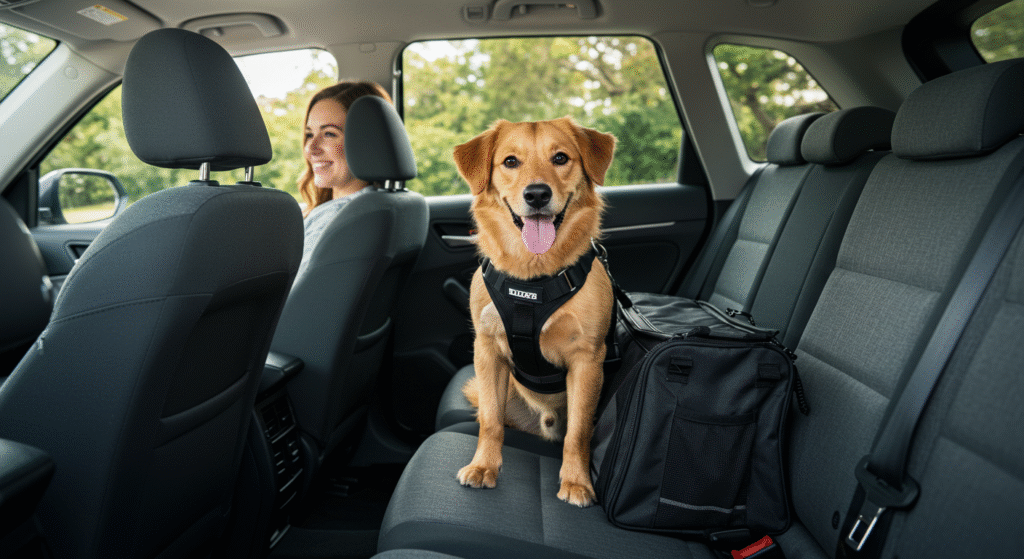Why Pet Safety Matters More Than Ever
If you share your life with a pet—whether it’s a curious cat, a playful pup, or a pocket-sized rabbit—their safety is always on your mind. Our furry companions are family, and just like children, they depend on us to keep them safe from hazards they can’t always recognize. From toxic houseplants and loose electrical cords inside your home to hot pavement in the summer sun and hidden dangers at the park, risks are everywhere.
This isn’t about living in constant fear; it’s about being proactive. The truth is, many accidents and emergencies involving pets can be avoided with planning, awareness, and some simple everyday habits. That’s what you’ll find here.
In this detailed guide, we’ll explore everything you need to know about keeping your pet safe both indoors and outdoors. You’ll discover what substances to keep out of reach, how to create a secure home environment, what precautions to take on walks and trips, and even how to prepare for emergencies. By the end, you’ll feel confident knowing you’re doing everything possible to protect your four-legged friend’s health, happiness, and well-being.
Pet Safety at Home: How Do I Make My House Pet-Proof?
Think of your home from your pet’s perspective. That dangling cord? A chew toy. The cupboard under the sink? A treasure chest full of exciting—but possibly deadly—items. Making your house pet-friendly requires looking at the world through their curious eyes.
What Household Items Are Dangerous for Pets?
Some dangers are obvious (like chocolate and rat poison), but others may surprise you. Here are common household hazards:
- Food hazards:
- Onions, garlic, grapes, raisins, chocolate, coffee, alcohol, xylitol (in sugar-free gum and baked goods)
- Toxic plants:
- Lilies (deadly for cats), aloe vera, poinsettia, philodendron
- Medications:
- Human pain relievers, antidepressants, and supplements can be lethal if ingested
- Cleaning supplies:
- Bleach, disinfectants, and even essential oils like tea tree oil in concentrated amounts
- Choking hazards:
- Small toys, string, hair ties, bones that splinter
📌 Pro Tip: Print out a list of toxic foods and plants and keep it somewhere handy—like attached to your fridge.
How Do I Pet-Proof Different Rooms of My House?
Living Room
- Tuck away cords or secure them in protective casings.
- Keep small objects (like Legos or coins) off the floor.
Kitchen
- Install child-proof cupboard locks for cleaning supplies.
- Store human food away in airtight containers.
Bathroom & Laundry Room
- Keep the toilet lid closed—yes, pets drink from it, and yes, chemicals can linger.
- Close detergent and medication bottles tightly.
Bedroom
- Watch for jewelry, hair ties, and pills on nightstands.
Outdoor Pet Safety: What Should I Know Before Going Outside?
The great outdoors is full of opportunities for exploration, exercise, and fun—but it also brings hazards like extreme weather, poisons, and wildlife.
How Hot Is Too Hot for Pets?
If pavement is too hot for your hand, it’s too hot for your pet’s paws. Dogs, especially, can suffer burns and heatstroke quickly.
Heat Safety Tips:
- Walk pets early in the morning or evening.
- Bring portable water bowls on walks.
- Use pet-safe sunscreen (believe it or not, dogs with thin coats and pink noses can burn).
- Never, ever leave pets in a parked car—even “just for five minutes.”
What Are the Biggest Outdoor Dangers for Pets?
- Toxins & Poisons: Fertilizers, pesticides, antifreeze, and de-icing salts.
- Parasites: Fleas, ticks, heartworms, and mosquitoes.
- Wildlife: Raccoons, snakes, coyotes, and even large birds may pose risks to small animals.
- Traffic: A loose collar or broken leash can be a recipe for disaster.
Outdoor Safety Checklist:
- Secure fences (double-check for digging spots).
- Use a harness or secure collar with ID tags and microchip.
- Keep vaccinations and parasite preventatives up-to-date.
How Do I Travel Safely With My Pet?
Whether you’re heading to the vet or on a cross-country road trip, transportation safety matters.
Car Safety for Pets
- Use a crate or pet seatbelt harness. Free-roaming pets in a car are both a distraction and a danger.
- Never let pets ride with their heads out the window. As fun as it looks, debris and wind can lead to injuries.
- Secure carriers properly. The seatbelt should loop through the carrier handle.
Air Travel Safety for Pets
- Research airline pet policies—some pets are allowed in-cabin, while others must travel in cargo.
- Invest in a sturdy, airline-approved carrier.
- Avoid sedating your pet unless prescribed by a vet.
How Can I Keep My Pet Safe in Emergencies?
Emergencies come in many forms: fires, floods, storms, or unexpected injuries. Planning ahead saves lives.
Emergency Kit Essentials:
- Pet first-aid kit (bandages, antiseptic wipes, tweezers, digital thermometer)
- A week’s worth of food, bottled water, and collapsible bowls
- Medications with instructions
- Copies of vaccination records
- Extra collar, leash, and ID tags
- Comfort item (blanket or toy)
Keep everything in an easy-to-grab tote.
Indoor vs. Outdoor Pet Safety: Quick Comparison Table
| Environment | Common Risks | Examples | Safety Solutions |
|---|---|---|---|
| Indoors | Toxic foods & plants | Chocolate, grapes, lilies, philodendrons | Store food securely, keep plants out of reach, post a toxic list on the fridge |
| Household chemicals | Cleaning products, essential oils, laundry detergents | Use child locks, keep lids tight, store on high shelves | |
| Choking hazards | Small toys, string, jewelry, hair ties | Keep floor clear, provide appropriate chew toys | |
| Electrical hazards | Chewing cords, exposed outlets | Use cord covers, block access, provide chew alternatives | |
| Overheating or entrapment | Pets stuck in dryers, hot rooms, or behind furniture | Always check appliances, never leave pets in unattended, confined spaces | |
| Outdoors | Heat & cold stress | Hot pavement, heatstroke, frostbite | Walk during cooler hours, provide shade/water, avoid extreme temps |
| Parasites & insects | Fleas, ticks, mosquitoes, heartworms | Monthly preventatives, regular vet checks, yard treatments | |
| Poisons & toxins | Fertilizers, antifreeze, de-icing salts | Wash paws after walks, avoid treated areas, store chemicals securely | |
| Wildlife encounters | Snakes, coyotes, raccoons, large birds | Supervise outdoor time, leash walks, secure fencing | |
| Traffic & escape | Cars, bikes, getting lost | Use harness/collar with ID tags and microchip, maintain secure gates/fences |
FAQs About Pet Safety
1. Can I use human first-aid supplies on pets?
Yes, some basic supplies (like gauze and bandages) are safe, but avoid human medications unless specifically directed by your vet.
2. How do I know if my pet has heatstroke?
Signs include heavy panting, drooling, lethargy, red gums, vomiting, or collapse. Move your pet to shade, provide cool (not icy) water, and seek vet care immediately.
3. Should my pet wear a collar indoors?
Small pets may get collars stuck in furniture. A breakaway collar is safest for cats; for dogs, you can remove the collar when they’re in a secured environment.
4. How often should I replace my pet’s ID tags?
Check regularly for legibility and replace at least every few years, or sooner if information changes.
5. What do I do if my pet eats something toxic?
Call your vet or an emergency hotline like the ASPCA Animal Poison Control Center (888-426-4435 in the U.S.) right away. Don’t wait for symptoms to appear.
Wrapping It Up: Protecting Your Pets, One Step at a Time
Pet safety isn’t about bubble-wrapping your cat or denying your dog the joy of a park run—it’s about being one step ahead of hazards they can’t anticipate. By pet-proofing your home, preparing for safe outdoor adventures, traveling responsibly, and having an emergency plan, you’re making sure that every wag, purr, or cheerful chirp continues for years to come.
Your pet brings endless joy into your life; giving them the gift of safety is one of the best ways to return the favor. Ready to take action? Start with one room, one walk, or one travel bag—and celebrate each safety win. Your furry friend may never say “thank you,” but the tail wags, cuddles, and calm snuggles are proof enough.

